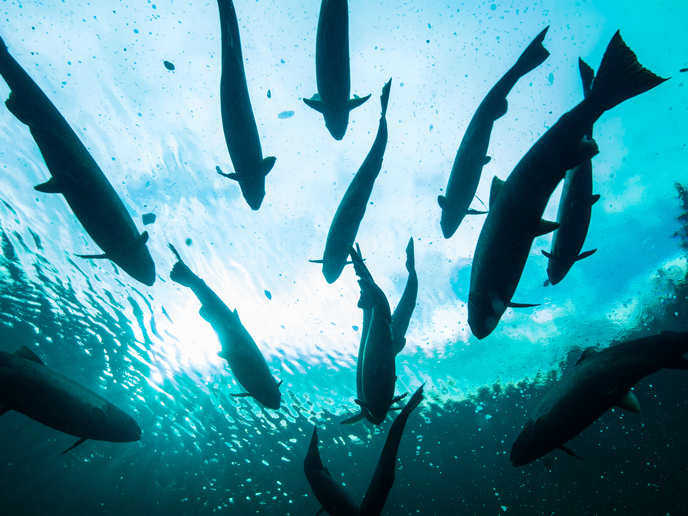
© Nick Hawkins
Atlantic salmon use internal ‘clocks’ synced with the length of daylight hours (photoperiod) throughout the year to time migration. Young fish (smolts) leave their rivers for the ocean when the days get longer. Adults return to their home rivers when the days begin to shorten.
Over the past few decades, this migration to sea and back has been happening a few weeks earlier, a phenomenon linked to climate change. While the genetic basis of migration timing is not yet fully understood, evidence suggests that fish are adapting to the higher water temperatures and altered flow regimes.
With the support of the Marie Skłodowska-Curie Actions(opens in new window) (MSCA) programme, the SAL-MOVE(opens in new window) project investigated a genetic basis of migration schedules, primarily in North American salmon. Models enabled a prediction of which subpopulations will be most vulnerable to climate-driven mismatches between internal and external cues.
Genetic basis for salmon migration
SAL-MOVE matched thousands of recorded adult salmon return dates from the 1970s to today with climate data and examined DNA in the genomes of about 300 fish in 11 populations. “A closer look at genetic differences between populations with earlier or later migration showed that migration timing in adults is shaped by multiple genes, including PPFIA2, and by a large DNA rearrangement,” explains MSCA fellow Samantha Beck of the University of the Highlands and Islands(opens in new window).
Analysis of 60 000 genetic markers in smolts leaving European rivers also revealed a migration-timing gene in young Atlantic salmon.
Genomics in individuals reveals a novel regulatory ‘switch’
SAL-MOVE sequenced the entire genomes of adult salmon and matched them to the fishes’ exact return dates, revealing critical insight missed in the population studies. “We discovered that a stretch of DNA just upstream of the PPFIA2 gene is strongly linked to migration timing and may act as a regulatory ‘switch’ influencing PPFIA2 activity. This region could provide a useful genetic marker to monitor as rivers and oceans warm,” Beck says.
“Although photoperiod is fixed, this non-coding genetic ‘switch’ could adjust salmon sensitivity to environmental cues, an exciting direction for future work. By understanding how this switch responds to climate change and how this affects migration timing across populations, we can better predict which salmon groups may be more resilient and which may struggle to keep pace with climate change,” adds Beck. Interestingly, PPFIA2 is also linked to migration timing in a songbird, suggesting a highly conserved ‘migration timing gene’ across vertebrates.
Machine learning models shed light on possible future scenarios
“Using genetic insights and future climate scenarios, our machine learning models suggested that salmon in more northern rivers will be the first to find their built-in calendars out of sync with climate change. Late-running fish are at greatest risk, since their genetic schedules must shift the most to match fast-changing climates,” says Beck.
Solutions like restoring natural flow patterns in rivers to ease access to spawning grounds, planting trees along riverbanks to keep waters cooler and, of course, reducing CO2 emissions can support salmon migration and population growth.
“This project’s discoveries would not have been possible without the combined support, expertise and data of Victoria Pritchard (UHI), Ian Bradbury of the Department of Fisheries and Oceans (DFO), the DFO team and many other scientists and fisheries biologists from across the Atlantic salmon’s range,” Beck notes. This highly collaborative team has pointed the way to the genetic basis of Atlantic salmon migration timing, highlighting how some populations’ migrations may be more vulnerable to climate change than others and providing a foundation for monitoring resilience.
